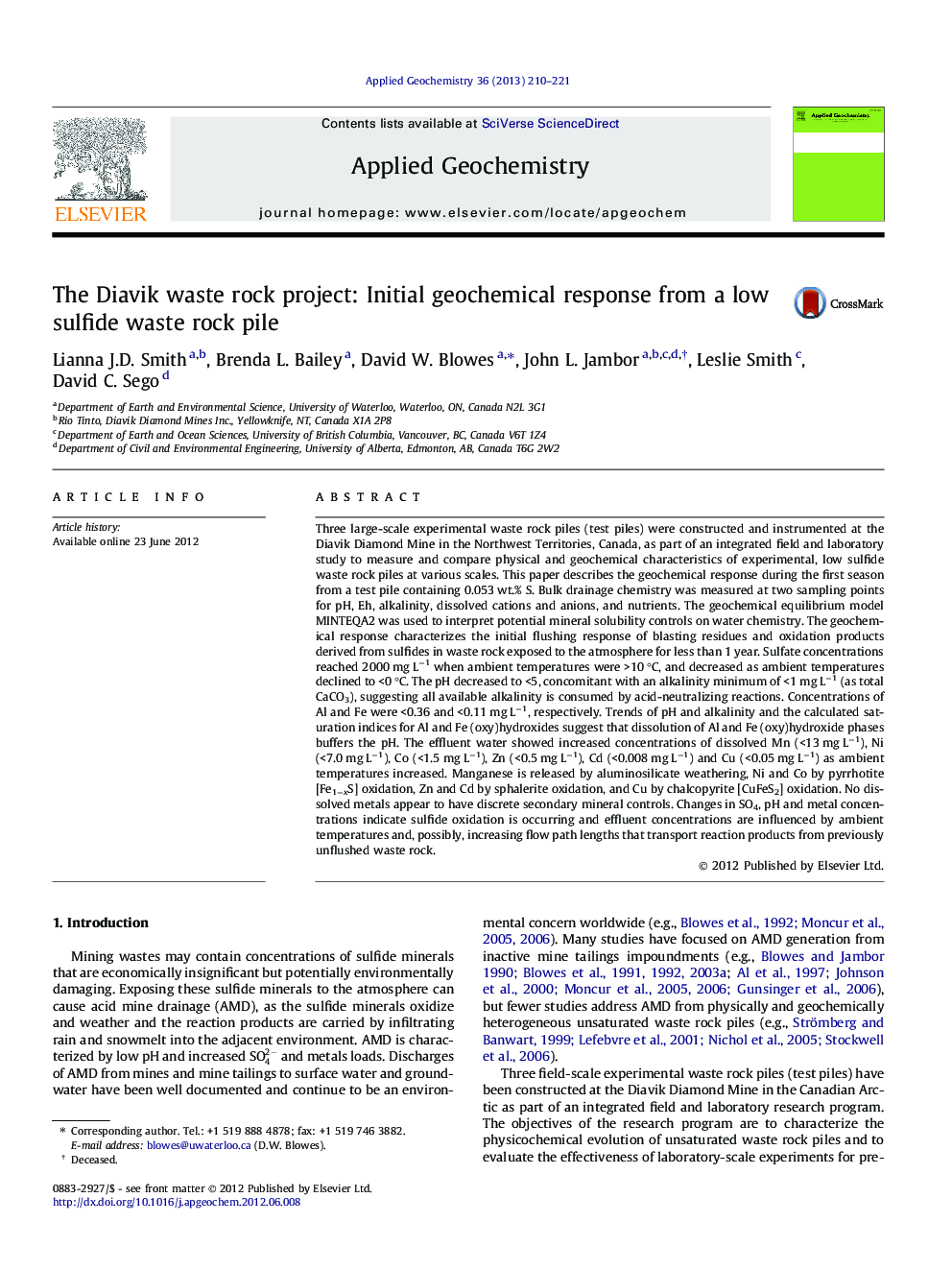| کد مقاله | کد نشریه | سال انتشار | مقاله انگلیسی | نسخه تمام متن |
|---|---|---|---|---|
| 4435997 | 1620255 | 2013 | 12 صفحه PDF | دانلود رایگان |

Three large-scale experimental waste rock piles (test piles) were constructed and instrumented at the Diavik Diamond Mine in the Northwest Territories, Canada, as part of an integrated field and laboratory study to measure and compare physical and geochemical characteristics of experimental, low sulfide waste rock piles at various scales. This paper describes the geochemical response during the first season from a test pile containing 0.053 wt.% S. Bulk drainage chemistry was measured at two sampling points for pH, Eh, alkalinity, dissolved cations and anions, and nutrients. The geochemical equilibrium model MINTEQA2 was used to interpret potential mineral solubility controls on water chemistry. The geochemical response characterizes the initial flushing response of blasting residues and oxidation products derived from sulfides in waste rock exposed to the atmosphere for less than 1 year. Sulfate concentrations reached 2000 mg L−1 when ambient temperatures were >10 °C, and decreased as ambient temperatures declined to <0 °C. The pH decreased to <5, concomitant with an alkalinity minimum of <1 mg L−1 (as total CaCO3), suggesting all available alkalinity is consumed by acid-neutralizing reactions. Concentrations of Al and Fe were <0.36 and <0.11 mg L−1, respectively. Trends of pH and alkalinity and the calculated saturation indices for Al and Fe (oxy)hydroxides suggest that dissolution of Al and Fe (oxy)hydroxide phases buffers the pH. The effluent water showed increased concentrations of dissolved Mn (<13 mg L−1), Ni (<7.0 mg L−1), Co (<1.5 mg L−1), Zn (<0.5 mg L−1), Cd (<0.008 mg L−1) and Cu (<0.05 mg L−1) as ambient temperatures increased. Manganese is released by aluminosilicate weathering, Ni and Co by pyrrhotite [Fe1−xS] oxidation, Zn and Cd by sphalerite oxidation, and Cu by chalcopyrite [CuFeS2] oxidation. No dissolved metals appear to have discrete secondary mineral controls. Changes in SO4, pH and metal concentrations indicate sulfide oxidation is occurring and effluent concentrations are influenced by ambient temperatures and, possibly, increasing flow path lengths that transport reaction products from previously unflushed waste rock.
► Geochemistry from a test-scale waste rock pile with 0.053 wt.% S is characterized.
► Blasting residues and oxidation products derived from waste rock are characterized.
► Changes in SO4, pH, and metal concentrations indicate sulfide oxidation.
► Dissolution of Al and Fe (oxy)hydroxide phases buffers the pH.
► Effluent concentrations are influenced by temperatures and flow path lengths.
Journal: Applied Geochemistry - Volume 36, September 2013, Pages 210–221